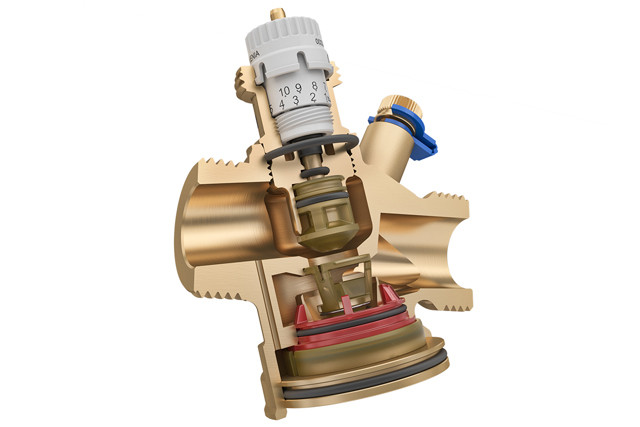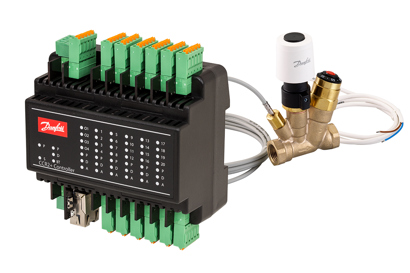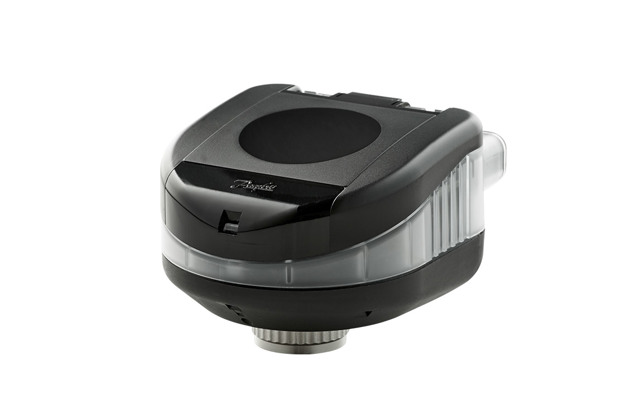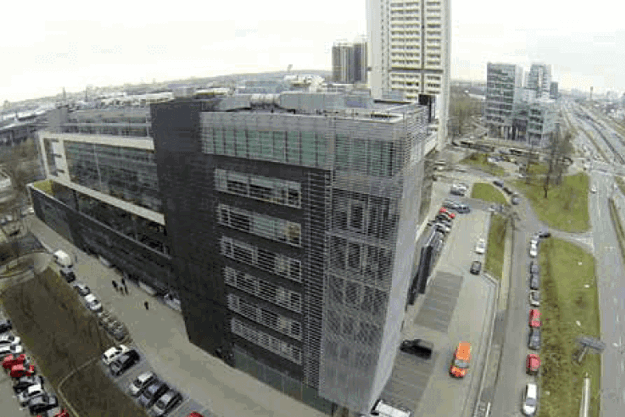
Engineering HVAC 4.0 for smart buildings
This is where HVAC 4.0 starts, The transition to HVAC 4.0 requires a close cooperation between many stakeholders. And in the end all of them benefit.
What is a smart HVAC system?
Modern HVAC is complex. Digitalization has changed the way we live, work, and interact with the world, and it’s changed the way HVAC systems are controlled. Danfoss is part of the smart HVAC transition, and we call it HVAC 4.0.
HVAC 4.0 is about providing comfort, economy, and sustainability through intelligent control of heating, ventilation, and air conditioning systems in buildings. With data from smart sensors, remote control makes it possible to optimize an indoor climate around occupancy patterns and usage profiles.
Because ultimately, the smartest buildings are the most energy efficient, comfortable, and convenient. The heart of this is HVAC data—vital for developing intelligent buildings that can become home to smart environments. We develop smart solutions that provide or use HVAC data for Active Energy Management (AEM). The data allows remote commissioning, predictive maintenance, and optimization of heating, ventilation, and cooling systems.
Danfoss provides technologies for improving the efficiency and quality of smart HVAC systems, gathering the key data to drive intelligent solutions for Building Management Systems (BMS) or cloud-based solutions that remotely control and monitor building heating, ventilation, and cooling.
Our smart HVAC systems provide the real-time data you need to make informed decisions about building performance. Our equipment complements cloud-based solutions and allows intelligent software to provide actionable insights. Our innovations help create more comfortable indoor environments, optimize energy usage, and assist in the management of your facilities.
Ultimately, the trend to develop smart buildings is all about making them more energy efficient for lower environmental impact, less strain on the local grid, and lower day-to-day costs to the building owners rather than eating into profits. And, of course, it makes the building more comfortable for people who spend around 90% of their time indoors.
Why upgrade to a smart HVAC system?
The transition to HVAC 4.0 requires a close cooperation between many stakeholders, all of whom will greatly benefit from the change.
- End users experience personalized comfort, better health, and improved productivity.
- Building owners experience operational excellence with lower costs, higher energy efficiency and increased ROI. Premises with green building certification are more desirable and often command higher rental prices.
- Specifiers and System Integrators provide innovative solutions and reduce liabilities
- Service and maintenance turns into a fact-based, easier manageable process that is less reliant on manual involvement and simpler to troubleshoot. Cloud-based solutions working with the building management system can also allow the data to be accessed remotely, keeping key stakeholders informed of the day-to-day situation


How to gather HVAC system data?
HVAC 4.0 systems are not just smart, they are clever. They know how to spot efficiency problems and how to reduce energy costs.
The key to success is actively using the information collected from building and HVAC data and stored in the Building Management System.
Digital IoT actuators provide substantial data and can be expanded with data from optional temperature and flow sensors.
This helps you to manage the energy flows and plan service and maintenance activities.
Image Copyright: Bert Teunissen/EDGE
Applications




Smart HVAC control solution for I-tower at WTC Amsterdam, the Netherlands
Reference case video about the modernization of the HVAC system in the I-tower of World Trade Center Amsterdam, the Netherlands.
Related products
-
if (isSmallPicture) {


 Pressure Independent balancing Control Valves (PICV)
Pressure Independent balancing Control Valves (PICV)Pressure Independent balancing and Control Valves (PICVs) provide both a control functionality and dynamic balancing solution for HVAC applications. The valves eliminate flow variations occurring in variable flow systems due to pressure fluctuations at partial load conditions.
-
if (isSmallPicture) {


 MTCV with CCR2+
MTCV with CCR2+MTCV Thermal balancing valves provide a dynamic, temperature based, balancing solution for drinking water applications. Combined with the CCR2+ a smart and energy-efficient electronic control solution for monitoring and disinfecting DHW systems is established.
-
if (isSmallPicture) {


 AB-QM 4.0 Pressure Independent Control Valves (PICV) DN15 - DN20
AB-QM 4.0 Pressure Independent Control Valves (PICV) DN15 - DN20AB-QM 4.0 Pressure Independent Control Valves (PICVs) are the successor of Danfoss AB-QM. They offer best-in-class specifications and easy installation. The scaling- and clogging resistant design secures and outstanding reliability and long lifetime. They fit to the NovoCon S digital actuators. This enables HVAC data collection for e.g. remote commissioning and predictive maintenance, resulting in a lower Total Cost of Ownership.
-
if (isSmallPicture) {


 NovoCon® S Digital Actuator
NovoCon® S Digital ActuatorWith NovoCon® S Danfoss revolutionizes the way hydronic balancing and HVAC control work together. The first of its kind digital HVAC actuators are directly connected with a Building Management System (BMS). This enables System Integrators to design state-of-art, Internet of Things (IoT) solutions.
-
if (isSmallPicture) {


 VLT® HVAC Drive FC 102
VLT® HVAC Drive FC 102This tough and savvy FC102 drive enhances pump and fan applications in building management systems, and runs outdoors in most climates.
Case studies
-
if (isSmallPicture) {


 Outstanding HVAC flexibility after high-end office building renovation
Outstanding HVAC flexibility after high-end office building renovationBuilding: Office
Application: Hydronic balancing and remote control of 4-pipe heating/cooling change-over system
Challenge: Ensure a flexible to use HVAC system with DGNB sustainability certification
Solution: Digital NovoCon actuator combined with AB-QM control valves and NovoCon CO6 combined with ChangeOver6 as a combination balance the system hydronically, allow remote access via a BMS and control the room temperatures during both heating and cooling operation. -
if (isSmallPicture) {


 HVAC control at Katowice business centre, Poland
HVAC control at Katowice business centre, PolandKatowice Business Centre is a modern office building where Danfoss hydronic balancing solutions are used; AB-QM balancing and control valves in combination with revolutionary NovoCon® actuators.



























